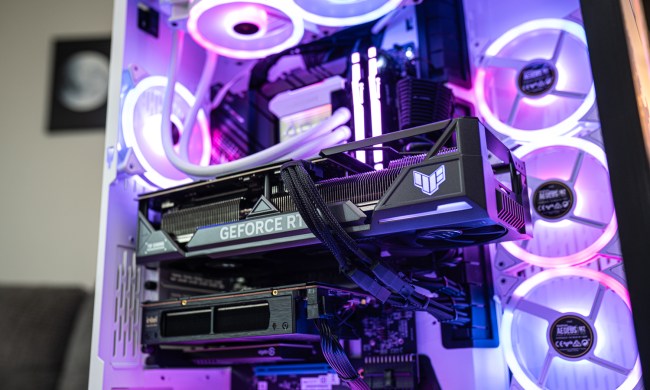Free communication apps like Slack and Discord let people of all stripes enjoy the company of friends, colleagues, and long-time groups, find and join games, or hang out and meet new people. While both offer similar capabilities, you might wonder which service will best suit you and your group’s requirements. Lucky for you, we’ve done the hard work of comparing Slack vs. Discord, making it easier to decide which is best for you.
Further reading
Text chat

Slack prides itself on delivering efficient communication between teams and individuals via direct messaging and group and company-wide notifications. Users can send private messages to other teammates or message everyone on their channel to ensure that everyone is kept informed. Channels can be created, renamed, and deleted as needed and you can add topics within a Channel, whether for organizing corporation-wide communication or keeping track of chats with individual clients or friends. The Group Chat feature allows multiple users to chat across timezones and continents whenever mutual decisions and discussions need to occur, ensuring that everyone can register their thoughts, opinions, and even GIFs in real-time.
Discord may have started with gamers as their primary market, but this communications service has expanded to embrace fandoms, communities, and interests of all kinds. Said communities often operate using a forum-like structure with servers being invitation only to avoid users accessing content they may find objectionable. However, unlike Slack, Discord users must be at least 13 years old to register with the app. While
Voice calls

Discord lets users create voice chat servers with a few simple clicks — all you need to do is click the “+” button near voice channels, select Voice Channel, click create, and you’re ready to start sending invitations. It’s also possible to call individuals directly, for one to one communication.
Users have an array of options to customize their audio experiences, including adjustable input and output sensitivity, noise reductions, and echo cancelation, all wrapped up with a microphone settings meter to help you avoid accidentally deafening someone. The app’s highly customizable permission settings determine whether anyone is free to join the conversation or a curated list of select participants with both channel and server-level roles.
On Slack, any member of the same workspace can initiate an audio call to another individual. Audio calls are conducted using voice over internet protocols or VoIP, which bypasses the need for traditional phone lines and permit workspace members to speak to each other as needed.
Video chat
Both app’s video chat features can be initiated via a DM with screen-sharing capabilities. However, free Slack accounts are limited to one-on-one participants on a single call, and regular Discord accounts are limited to 10 participants (currently raised to 25, due to current events). Slack and
Paid features and integrations (the way they jell with games, streaming, web apps, etc.)
Both services offer premium packages with enhanced features and services. Slack’s Standard package costs $6.67 per person per month when billed annually. Users get access to their entire message history, an increased storage capacity of 10GB per member, screen sharing, and no limits on the number of apps they can integrate. Slack’s Plus plan costs $12.50 per person per month when billed annually. It increases storage to 20GB per member, among other upgrades. There’s an Enterprise Grid plan, too, offering 1TB of storage for each member, though pricing requires a call to Slack’s sales department.
While Discord only offered text and audio chat features at first, users can now enjoy screen-sharing, video-conferencing, and integration with Spotify, Xbox Live, and Twitch.
Both apps have iOS and Android versions, as well as desktop and client browsers.
Popularity and audience
The main difference between the two apps is that Discord is specifically geared towards gamers. At the same time, Slack tends to be used by every-day netizens and businesses of varying sizes. Still, each service has much to offer an interested party. Each service has a respectable daily user base, 14 million for Discord and 12 million for Slack in 2019, each of which has only grown over the tumultuous course of 2020. Another similarity between Slack and
Discord
If you indulge in online gaming even slightly, there’s a pretty good chance you’ve heard of this app. Discord was designed around server-based communications from the get-go and currently has at least 6.7 million servers devoted to particular games, game modes, and other sub-topics, making it great for finding existing communities of likeminded individuals. The company’s image suffered considerably when it was discovered that white supremacists and Neo-Nazis used a
Slack
Slack has always envisioned itself as a one-stop-shop for workplace communications by combining email threads, phone and chat services, and virtual meeting spaces, but where it really shines is the staggering 2,500 available apps bots to help you manage and use Slack to its fullest extent. In case you’re unfamiliar, bots are automated programs that can handle a truly incredible number of tasks — e.g., LunchTrain for privately organizing employee lunches, Trello for approving users and adding cards, Statsbot for analytics updates, metrics management, and report generation — letting you focus on more pressing concerns. You can even create your own custom bots with a little know-how and a decent amount of patience.
Which is best for you?
While both services offer an impressive array of free-to-use communication apps, the sheer disparity of incorporated bots, apps, and integrations makes Slack the clear winner in terms of offering the most flexibility for your group. However, Discord provides a top-rated service that has taken great strides to attract non-gaming interests while originally marketed and designed towards gamers. While it remains to be seen if



